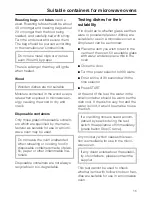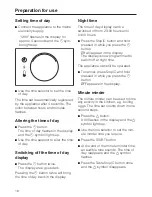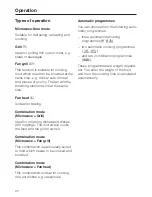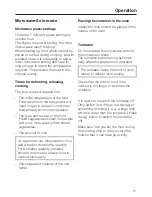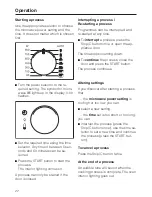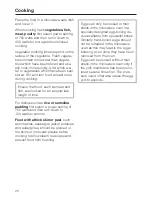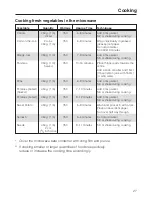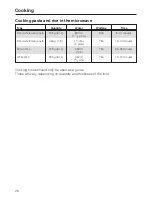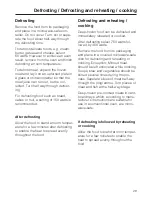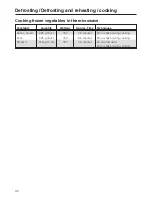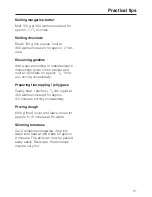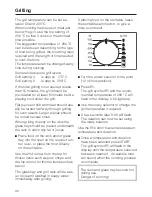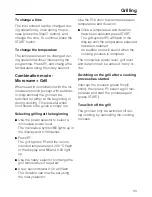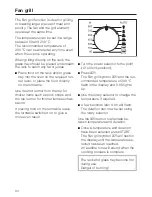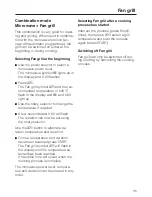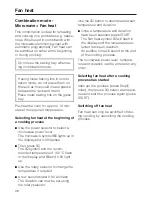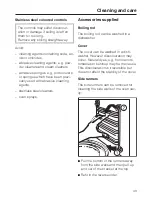
Defrosting
Remove the food from its packaging
and place in a microwave-safe con-
tainer. Do not cover. Turn, stir or sepa-
rate the food about half-way through
the defrosting time.
To defrost delicate foods, e.g. cream,
butter, gateau and cheese, select
80 watts. However to achieve an even
result, remove from the oven and finish
defrosting at room temperature.
To defrost meat, unpack the frozen
meat and lay it on an upturned plate in
a glass or china container so that the
meat juice can run out, but be col-
lected. Turn half way through defrost-
ing.
For defrosting food such as bread,
cakes or fruit, a setting of 150 watts is
recommended.
After defrosting
Allow the food to stand at room temper-
ature for a few minutes after defrosting
to enable the heat to spread evenly
throughout the food.
Defrosting and reheating /
cooking
Deep-frozen food can be defrosted and
immediately reheated or cooked.
After defrosting select 750 watts fol-
lowed by 450 watts.
Remove the food from its packaging
and place in a covered microwave-safe
dish for defrosting and reheating or
cooking. Exception: Minced meat
should be left uncovered while cooking.
Soups, stew and vegetables should be
stirred several times during the pro-
cess. Separate slices of meat half-way
through the programme. Turn pieces of
meat and fish at the half-way stage.
Deep-frozen pre-cooked meals in card-
board trays which, according to manu-
facturer's instructions are suitable for
use in a conventional oven, are micro-
wave-safe.
If defrosting is followed by reheating
or cooking
Allow the food to stand at room temper-
ature for a few minutes to enable the
heat to spread evenly throughout the
food.
Defrosting / Defrosting and reheating / cooking
29

